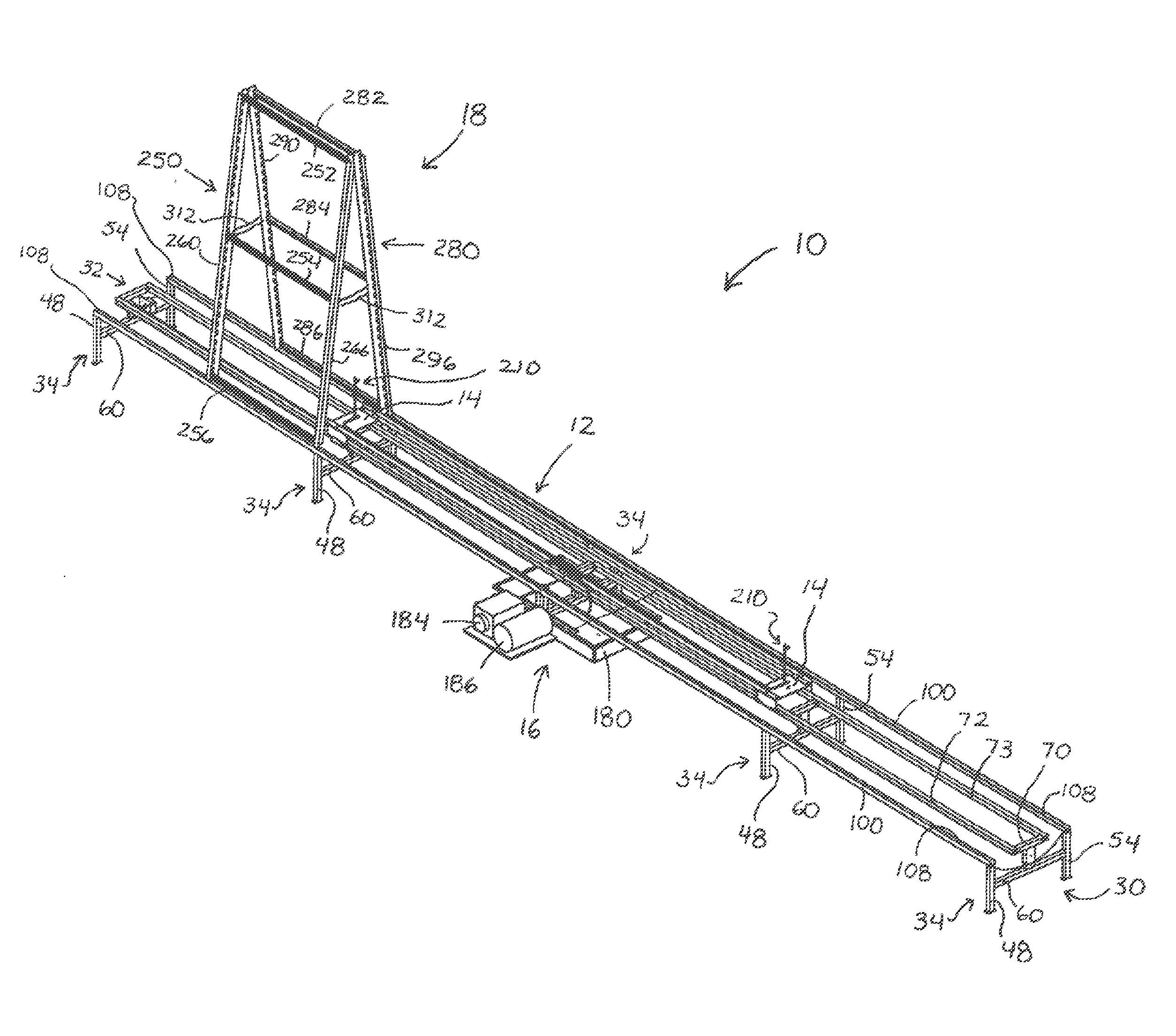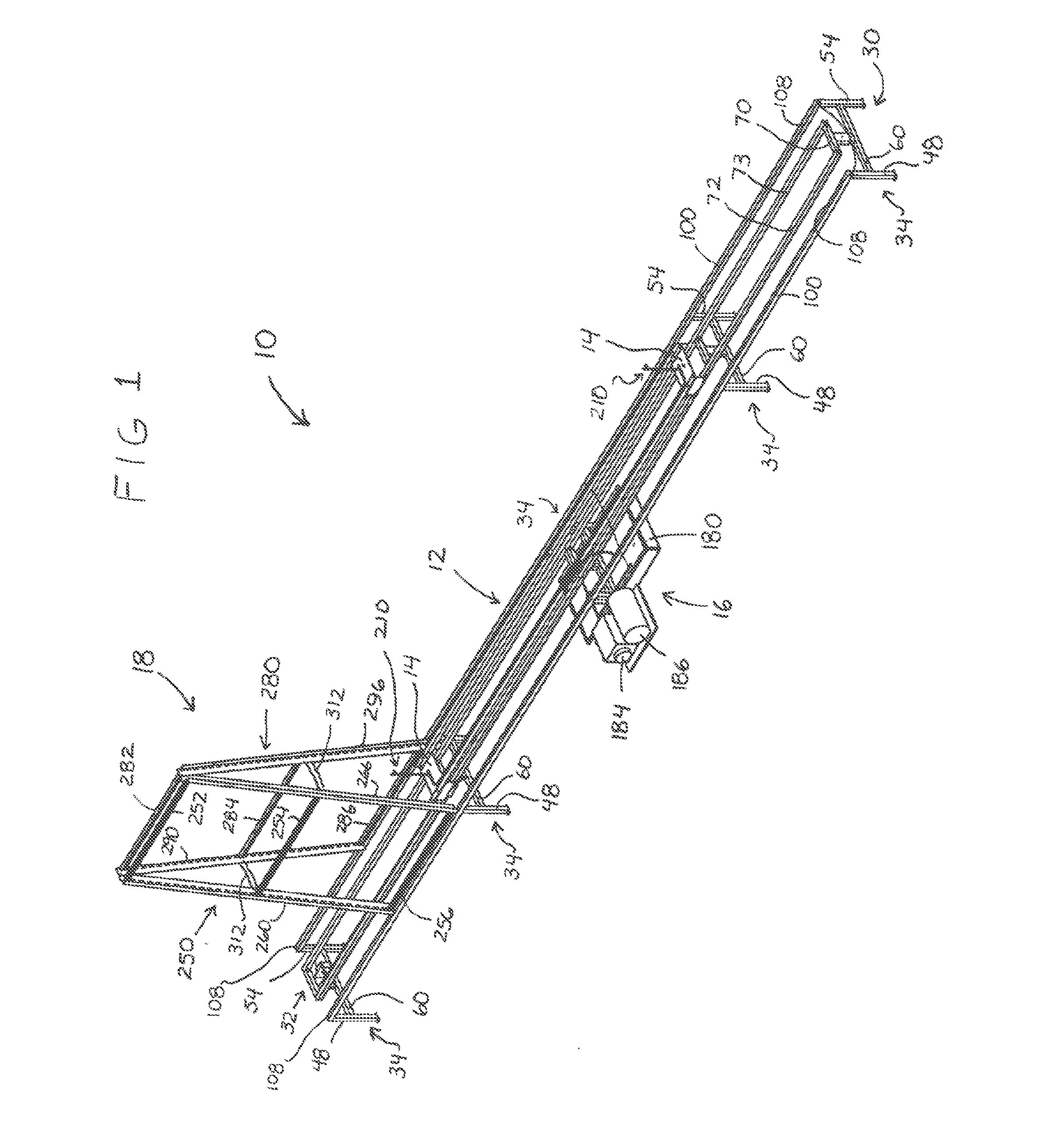Controlled environment and method
a controlled environment and environment technology, applied in the field of plant cultivation, can solve the problems of less effective interaction with the atmosphere, low yield, and high fertilizer concentration, and achieve the effects of maximizing the number of plants per square foot, and reducing the number of nozzles
- Summary
- Abstract
- Description
- Claims
- Application Information
AI Technical Summary
Benefits of technology
Problems solved by technology
Method used
Image
Examples
Embodiment Construction
[0096]
ELEMENT DESCRIPTIONELEMENT #Irrigation system10Framework12Carriage14Carriage assembly15Delivery arrangement16Plant stand18Plant22Shoot24Root26First end30Second end32Sub-frame34Center post36(Center post) upper end38(Center post) lower end40Outer post48, 54(Outer post) upper end50, 56(Outer post) lower end52, 58Cross bar60Opposing ends62, 64Flange66Bracket68Guide assembly69Crossbeam70First end71aSecond end71bGuide member72, 73Base74Side wall76, 82Channel88Rail100Base102Side wall104, 106Slot108Angle110Platform134Strut140, 142First end144Second end146Attachment bar147Friction reducing element148Extension152Connecting element154Link156, 158Drive assembly160Motive source162Drive shaft164Drive member166Belt168Idler roller170Spindle172Sensor174Programmable controller176Reservoir180Platform182Pump184Motive source186Booster pump188Supply line190End191a, 191bFixture194Rotary connector195T-connector196Compressor197Conduit198First end199aTrunk200, 201Connector202, 203Mast204Bottom end205Tr...
PUM
 Login to View More
Login to View More Abstract
Description
Claims
Application Information
 Login to View More
Login to View More - R&D
- Intellectual Property
- Life Sciences
- Materials
- Tech Scout
- Unparalleled Data Quality
- Higher Quality Content
- 60% Fewer Hallucinations
Browse by: Latest US Patents, China's latest patents, Technical Efficacy Thesaurus, Application Domain, Technology Topic, Popular Technical Reports.
© 2025 PatSnap. All rights reserved.Legal|Privacy policy|Modern Slavery Act Transparency Statement|Sitemap|About US| Contact US: help@patsnap.com



